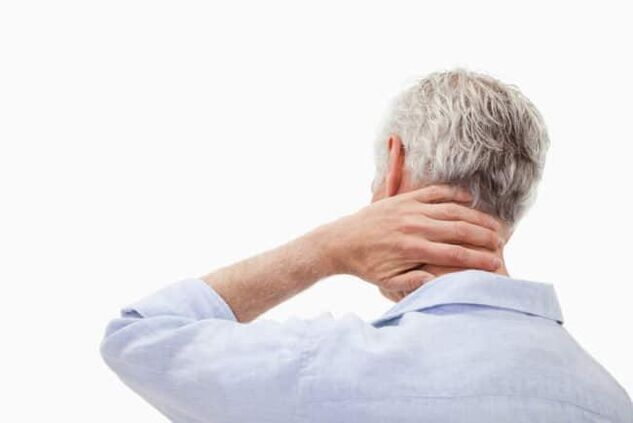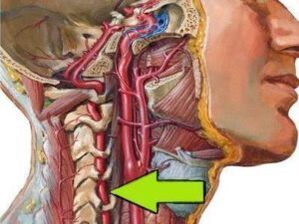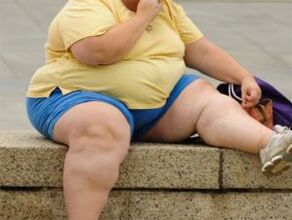Among all pathological processes that affect the spine in different parts, cervical osteochondrosis is considered one of the most common and painful.This disease causes many complications, especially because it affects the spinal cord, and also negatively affects brain function.

What is cervical osteochondrosis?
Words of cervical osteochondrosis in medical practice means progressive disease obtained that affects specific spine.This pathological process is characterized by the degenerative-distribution process in the intervertebral disc tissue, which is a shock absorber for cervical vertebrae.Degenerative-distribution changes in intervertebral discs are caused by the fact that they are removed and deformed.As a result, the distance between the vertebra is reduced and as a result the following consequences occur:
- Narrowing of the spinal canal in a certain area of the spine.
- Passing the vertebral artery - a large blood vessel that provides blood supply to the brain.Therefore the brain supply worsens and blood circulation in the cervical spinal cord is disrupted.
- Intervertebral disk can be deformed and leveled.This causes extortion of each part of the spinal cord and nerve, more often, the nerve roots are squeezed.
All of these problems threaten not only violations of brain blood circulation, painful sensations in the neck, headaches, etc.The development of osteochondrosis is harmful to cervical areas with neurological problems, worsening the central nervous system, damage to brain tissue.According to the classification of international disease, some separate codes were assigned by osteochondrosis from the cervical area.Disease code for ICB 10 depends on the age of the disease: the disease is diagnosed:

- M02 - Distrophy intervertebral discs in adolescents.
- M42.12 is the process of dystrophy in the neck in adults.
Many factors depend on the patient's age and the level of development of the pathological process, for example, consequences, complications, symptoms and, of course, the principles of treatment.
Reason
Knowing the cause of the development of osteochondrosis cervical areas can play a decisive role in the diagnosis process, and determine the principles of fighting disease.However, before stating the reason, it is better to say that doctors distinguish two factors that lead to the development of this pathological process:
- Pathological - Destruction of intervertebral and other vertebrate discs with tissue involvement nearby, blood vessels and nerve beams in the pathological process under the influence of adverse external factors.The more difficult these factors and other pathologies, the faster the disease develops.
- Physiological - Based on the development of pathology, especially changes related to age.We talk about the natural aging of cartilage tissue in the spine, salt, etc.
If we include a more specific cause of cervical osteochondrosis, they are as follows:
- Violations of metabolic processes in the body, as well as certain obesity stages.
- Hypodynamia is a phenomenon that is characterized by limited mobility.This is not just about injury or disease, this can also include a lifestyle and a permanent sitting work.
- Pathology of the cardiovascular system, contributes to disorders of blood circulation in the brain, changes in pressure and other things.
- Wrong posture, this is various forms of scoliosis, rheumatism and even flat legs.
- Neck spine injection.In this case, we talk about sprains, strikes, bruises.Other spinal investigations in the development of cervical osteochondrosis can affect the development of cervical osteochondrosis.
- Physical activity that is too large in the cervical area caused by intensive or severe physical exercise, depending on the type of human activity.
- A permanent lifestyle is also dangerous with continuous tension from the neck spine and the entire spine, if you sit wrong or in uncomfortable furniture.
- Neck spine hernias, as well as various related diseases.
- The long handle of the head is in an uncomfortable or unnatural position.In this case, not only muscle overstrain occurs, but the spine is also curved in the cervical area.
- Doctors consider constant stress and nerve tension as a very common cause.
- One reason is also considered a congenital anomaly in the spinal structure.

What is the danger of health?
As mentioned earlier, in the neck spine, not only the spinal cord and various nerve branches are located, but also the spinal artery that supplies the occipital parts of the brain, the cerebellum and the medullavic brain.With the development of cervical osteochondrosis, nearby tissue inflamed.In addition, the development of pathology threatens to squeeze nerve roots and transmit blood vessels, the consequences are as follows:
- Osteochondrosis is accompanied by spinal deformation, the consequences in which cerebrospinal channels are narrowed in certain areas.This can cause squeezing the spinal cord and nerve branches, which promise severe neurological problems.In severe cases, a person feels pain, there is even the possibility of loss of control over each body part (especially in the hands or face).
- Accompany the neck vessels, as mentioned, accompanied by violations of blood circulation in the brain occipital area.At the same time, the brain stops receiving oxygen and nutrients in the required amounts, oxygen hunger begins.With circulatory disorders, there is a clear risk of ischemic stroke and various neurological pathologies.
Syndrome
The main syndrome is:
- Vertebral.
- Vertebral artery.
- KORESHKA.
- Heart.
It is important to know that each of these symptoms is accompanied by a different painful sensation, as well as many unfavorable clinical signs.Someone can feel dizzy, sound appears in his ears and more.

Vertebral syndrome
It talks about the direct relationship of osteochondrosis cervical area with bone and cartilage tissue.Symptoms in this type of pathology are also associated with tissue lesions mentioned:
- Partial or completely limited neck movements.
- Head movements are accompanied by pain in the neck.
- X -Ry shows morphological changes in tissue (intervertebralis and in the body of vertebrae).
It should be noted that the vertebral syndrome is always accompanied by these three clinical signs.If at least 1 of them does not exist, the diagnosis will be very different.
Rook syndrome
That happens when the spinal cord root is damaged.At the same time, nerve conductivity is disturbed, a person can feel pain or loss of sensitivity of the parts of each body or even suffer from paralysis.Depending on 8 radicular pairs where there are conductivity disorders, these symptoms are distinguished:
- 1 couple - numbness or pain behind the head;
- 3 couples - violations of reflexes chewing, numbness of tongue and unpleasant sensations behind the ears;
- 4 Pair - pain in the clavicle, violation of swallowing reflexes;
- 5 pairs of shoulder girdle violations, accompanied by hand movement problems;
- 6 couples - Patients begin to feel pain and numbness in the forearm and shoulders;
- 7 couples - hands and fingers dead numb (often index and middle);
- 8 Pair - Problems similar to past items, but the nation feels felt on the ring finger and pinky finger.
Cardial syndrome
Apart from the fact that the pathological process is still localized in the neck spine, this syndrome has all signs of heart pathology.The clinical picture is as follows:
- Fast pulse.
- Pain in the sternum region.
- Shortness of breath, weakness, lethargy, decreased performance.
Signs and symptoms of cervical osteochondrosis
To find a doctor on time, it is necessary to clearly understand the signs of cervical osteochondrosis.In some cases, such knowledge allows you to seek help in the early stages of disease, when more easily treated.In general, the symptoms of the neck spine osteochondrosis are as follows:

- Pain for osteochondrosis is always there, only different intensity and frequency.This is the pain which is the first clinical sign.Their intensity depends on the stage of disease development, in their realm stupid or pinched.A painful sensation is present mainly in the neck of the occipital area, but can also radiate to the temporal region, shoulder and hand corset.
- In most cases, there are manifestations of vestibular equipment lesions.We talk about dizziness that is often without T -shirts, nausea, movement coordination disorders, uneven walking styles, loss of space.
- One of the most common clinical signs is the stiffness of the neck muscles and the stiffness of the movement.It is difficult for someone to turn around, lower and throw away his head, the movement of responding with pain attacks.
- Many patients record the feeling that goosebumps "running through the scalp" or tingling that is felt.
- In the hand area there is muscle weakness and numbness.
- Often there are psychological manifestations, which are expressed in depression, drowsiness, sharp changes in mood, anger or irritability.
- Because of disruption of blood circulation and damage to brain tissue, dizziness is increasingly intensive and noise in the ear appears, similar to rustling, pulsation, ringing.
- Most patients record visual disorders, as well as pain in the eyeball, especially when trying to cut the eyes to the left, right, up or down.
Sometimes it is possible to determine the level of development of the pathological process with symptoms.However, for this complete diagnosis, this is still not enough and a number of diagnostic measures are needed.
Diagnostic method
The diagnosis of the neck spine osteochondrosis is needed to determine the localization and stage of disease development.For full diagnosis, such diagnostic methods are needed:
- X -Ray - The main method that allows you to determine the level and localization of the spinal column deformation.
- You can use computing tomography to the diagnosis of more accurate pathological changes in vertebrae and intervertebral discs.
- MRI (Magnetoresonance Imaging) - It is possible to check the wheels and vertebrae in detail, determine the presence of hernias, bulges, and the remaining scale of the lesion.
- Doplelerography - At the same time, examination becomes an opportunity to find a place to squeeze the arteries, evaluate the level of circulatory disorders.
Treatment method
Treatment of neck osteochondrosis always implies an integrated approach.The principles of treatment depend on the mass of factors, such as the age of the patient, the stage of disease development, the brightness of clinical images, etc.However, you cannot do it without a doctor in this situation and first you can consult with the therapist who will then direct you to vertebology.The integrated approach: Osteochondrosis cervical osteochondrosis is treated using drug therapy, physiotherapy, massage, sports therapy and other methods that must be discussed in more detail.
Drug care
The basis for the treatment of cervical osteochondrosis is drug therapy, which involves the use of tablets, drugs and drugs from the group:
- Anesthesia - analgesics and antispasmodic.Former centers -nerve centers directly collect, thereby stopping painful sensations.The latter allows you to eliminate neck muscle spasms, build blood flow and suppress pain.
- NSAID -Non -steroidal anti -inflammatory drugs are needed to reduce the inflammatory process, most of them also relieve pain.Often these drugs are used in the form of gels, ointments that are rubbed into the affected area.
- Musorelaxan is another way to eliminate muscle spasms in the cervical area.
- Chubontrotector is mandatory at a certain stage of osteochondrosis chop, because they contribute to bone tissue recovery.
- B Vitamin - Normalization of the metabolic process of nerve tissue, increases the conductivity of nerve impulses and contributes to the work of the central nervous system.
Remember, treatment must be carried out only under the supervision of a doctor, who is responsible for the appointment of each drug, as well as determining the duration of its intake and dose.
Physiotherapy
Treatment of neck osteochondrosis will repeatedly use several physiotherapy techniques:

- Electrophoresis.
- Laser therapy.
- Ultrasound.
- Massage.
Massage therapy must be carried out by experienced health workers, maintenance is carried out with a course at least 10 sessions.Cervical massage helps normalize blood circulation, restore elasticity, muscle tone, relieve pain, etc.
Manual therapy
Manual therapy is based on the principle of restoring motor function and mobility between vertebrae.Initially, manipulation was in a mild casual massage, then the doctor attached more strength, working on pressure vertebrae and neck turn.
The use of Kuznetsov applicator is one of the therapeutic methods for spinal disease, including osteochondrosis.The effect of adaptation in the cervical area normalizes the metabolic process, reducing pain, increasing muscle tone, increasing blood circulation, increasing the conductivity of nerve tissue, etc.To prevent osteochondrosis, it is important to be involved in swimming and hanging on the horizontal rod for 2-3 minutes every day.


























































































